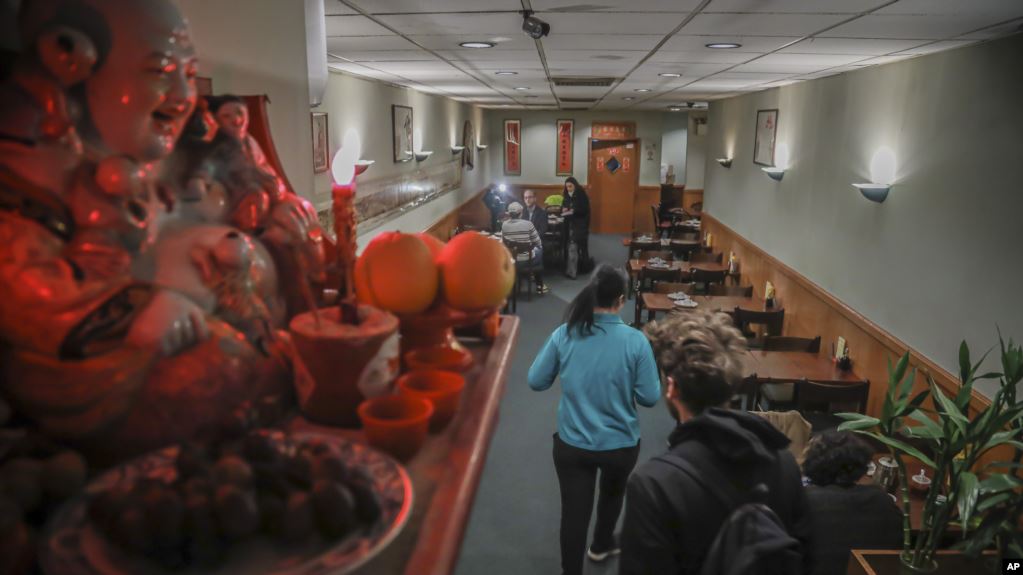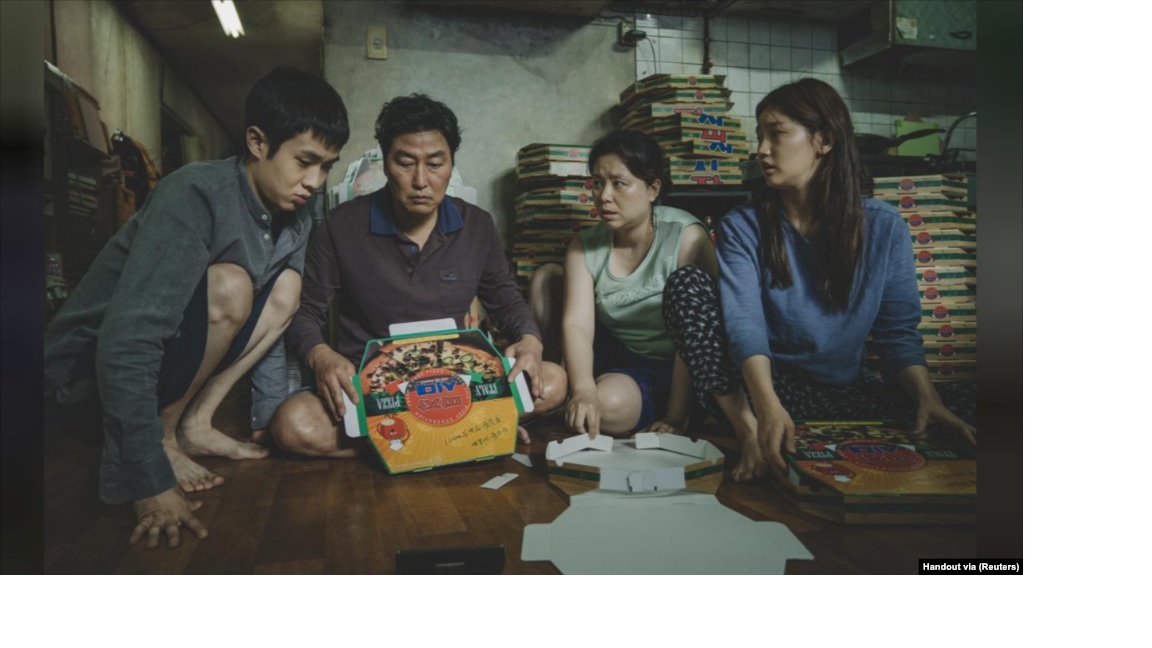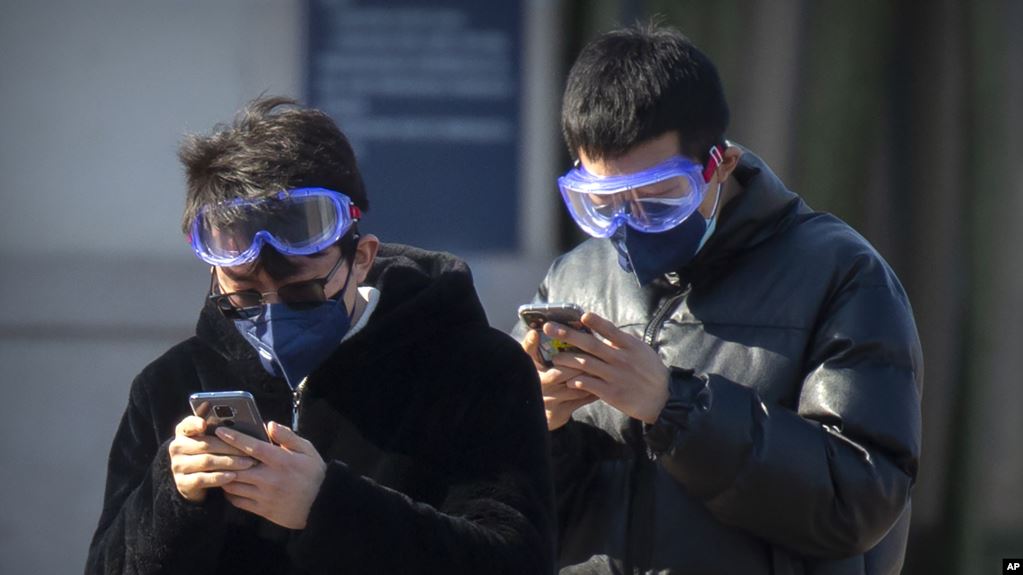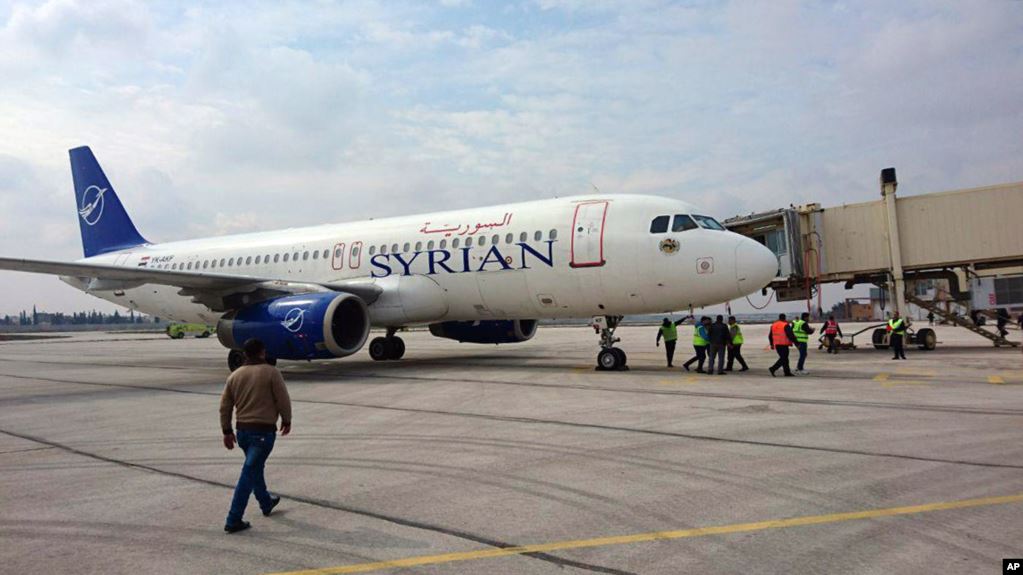뉴스&스피킹(영자신문)
하루 10분이면 영어에 대한 두려움을 극복하고 누구나 유창하게 영어를 구사하실 수 있습니다.
-
 Fears of New Coronavirus Hurting Asian American Businesses Asian American businesses are seeing a drop in customers because of fears over the new coronavirus outbreak in China.
Fears of New Coronavirus Hurting Asian American Businesses Asian American businesses are seeing a drop in customers because of fears over the new coronavirus outbreak in China.
In many places, city officials are trying to stop the financial harm with efforts like information campaigns and personal visits to stores and restaurants. They aim to bring attention to the fact that there have been few confirmed cases of the disease in the United States. They say there is no reason to avoid Asian American businesses.
The newly opened Asian District in Mesa, Arizona, was organizing a night market for the end of February. Then, news of a case of the illness known as COVID-19 was confirmed at nearby Arizona State University.
Comments on social media and phone calls started almost immediately, said Vicente Reid. He is chief of the Arizona Asian Chamber of Commerce.
Reid said, “I probably should stop picking up my phone altogether. ”
The new coronavirus has sickened tens of thousands of people, mostly in China. Fifteen people in the U.S. have been confirmed to have the virus. All but two had recently traveled to China.
Fewer people at restaurants
Vegetarian Dim Sum House has been a popular place to eat in Manhattan’s Chinatown for 23 years. But recently, owner Frankie Chu said he will not be able to pay his rent this month.
Chu said restaurant sales have dropped 70 percent over the last two weeks. On a recent weekday, just three couples stopped in for lunch. Normally, Chu said he gets up to 30 people for lunch. At dinnertime, his narrow restaurant usually gets about 70 customers. These days, he has about four.
“I don’t know how long I can stay here,” Chu said. “After 9/11, it wasn’t this bad.”
The situation has concerned New York City officials and business leaders. They have launched a campaign to bring people back to hard-hit communities in Manhattan, Queens and Brooklyn.
“Chinatown is bleeding,” said Wellington Chen. He is executive chairman of the Chinatown Partnership, a local business and community group. “This thing is thousands of miles away. This fear is really out of proportion.”
New York City is home to more than 500,000 Chinese Americans, the biggest population of any U.S. city. Some New Yorkers whose families are from China say they feel now like foreigners because of a disease spreading in another country.
“It’s a little annoying to be honest,” said Christina Seid, owner of the Chinatown Ice Cream Factory. Her father started the business 40 years ago.
Her great-grandparents immigrated to New York from China. She said business has been slower than usual but added that the winter months are not busy for ice cream stores. She said she feels hopeful that things will soon return to normal.
There have been no confirmed cases of the virus in New York City. Officials and politicians are trying to prove to locals that there is no reason to avoid any neighborhood. Many city leaders have been eating at Chinese restaurants and publishing pictures of themselves doing so, using the hashtag #SupportChinatown.
In Boston, Massachusetts, Mayor Marty Walsh has launched a similar social media campaign. He has asked people to share pictures of themselves supporting small businesses in that city’s Chinatown with the hashtag #LoveBostonChinatown.
In the San Francisco Bay Area, the situation is serious enough that Sunny Wong’s family is considering temporarily closing one of the four restaurants they own in Oakland Chinatown. Even some of his friends and longtime customers have told him about false stories of people getting sick at one of his restaurants.
“They hear stories and rumors and they just don’t really look for the facts in a situation,” Wong said.
Nom Wah Tea Parlor is the oldest restaurant in Manhattan’s Chinatown. Manager Vincent Tang said the restaurant had a 40-percent drop in business over the past three weeks. During a recent weekday, nearly half the tables were empty.
Some customers at Nom Wah said they were surprised that others were staying away.
“It didn’t cross my mind at all,” said customer Kate Masterson. “It’s not happening here,” she said of the outbreak.
I’m Ashley Thompson.View -
 The Real Neighborhoods of Oscar-Winning Film 'Parasite' South Korea’s Oscar-winning movie “Parasite” tells the story of class struggle through the sights and smells of Seoul.
The Real Neighborhoods of Oscar-Winning Film 'Parasite' South Korea’s Oscar-winning movie “Parasite” tells the story of class struggle through the sights and smells of Seoul.
“Parasite” made history this week when it became the first non-English language movie to win the Oscar for best picture. People all over South Korean social media celebrated.
The film is a story of two South Korean families - the wealthy Parks and the poor Kims. It shows the deepening inequalities in Asia’s fourth-largest economy. The story has been embraced by people around the world.
Visual signals in the film resonated with many South Koreans who call themselves “dirt spoons” -- those born to low-earning families. Many of these families have stopped trying to buy a home or gain better economic and social positioning.
On the opposite side, “gold spoons” are people born into wealthy families.
Much of “Parasite” was filmed on movie sets. But the idea for the Parks’ home and the Kims’ sub-basement apartment came from real neighborhoods in Seoul. A sub-basement apartment is a usually small, dark apartment built partly underground.
Poverty Downtown
Ahyeon-dong is one of the last of the poor areas near downtown Seoul. It is where the Kims are said to live in the film. The neighborhood made several appearances in the film.
Sitting on a hill near the main train station, Ahyeon-dong has steep, narrow streets. Many of them end in long staircases that people climb to reach their homes.
“Watching the film made me feel like they put my life right in there,” Lee Jeong-sik told Reuters news agency. He is the 77-year-old co-owner of Pig Rice Supermarket, which appears in the film. He and his 73-year-old wife, Kim Kyung-soon, have operated the store for 45 years. Pig Rice is open from around 8:30 in the morning until midnight each day.
The store used to open even earlier, at 5, for mothers who would come to buy things for their children’s school meals. But now the neighborhood is mostly older people, with few young couples or children, Kim said.
Local people said rents for sub-basement apartments in Ahyeon-dong have risen to around $340 each month. The rental costs there have more than doubled in the past 10 years.
Seoul's 'Beverly Hills'
Across town is the area of Seongbuk-dong. That is where the wealthy Parks’ home is set in “Parasite.” The area is home to many business families and diplomats. It is known as South Korea’s version of Beverly Hills – an extremely wealthy community in Southern California.
Unlike in Ahyeon-dong, the streets in Seongbuk-dong are clear of waste. They are also very quiet, with most homes hidden behind high walls, fences and security cameras.
Chung Han-sool heads a company called Peace Estate Agents, which sells houses. He said most of the houses in Seongbuk-dong have basements for home bars or small theaters.
Homes in the neighborhood usually cost around $6 million. Those rented to foreign diplomats are offered for $8,500 to $12,725 each month.
Chung said there are 48 ambassadors living in the neighborhood. A separate group of police officers protects them.
Even in Seongbuk-dong, signs of inequality can be seen at the “drivers’ diners” -- similar to one from “Parasite.” Although anyone can go to one of these low-cost restaurants, they got their name by serving meals to drivers, including drivers carrying the area’s wealthy residents.
“There are taxi, bus drivers and those who drive the CEOs who live around here,” said Bae Sun-young, who runs one of the drivers’ diners in Seongbuk-dong. He said the differences between the wealthy and the poor are extreme.
I'm Jill Robbins.View -
 How Women Leaders Govern Differently A record number of women currently serve in the United States Congress. They hold 23.5 percent of the 435 seats in the House of Representatives. And 26 out of the 100 members of the Senate are women.
How Women Leaders Govern Differently A record number of women currently serve in the United States Congress. They hold 23.5 percent of the 435 seats in the House of Representatives. And 26 out of the 100 members of the Senate are women.
However, the U.S. government still has a smaller percentage of female lawmakers than many other countries, including Mexico, Tunisia, Vietnam and Zimbabwe.
The Inter-Parliamentary Union tried to rate 193 countries by the number of women they have serving in national government positions. The United States finished in 76th place in the study.
The numbers are a little higher on the state government level; in 2019, about 29 percent of state legislators were women.
Two female members of the U.S. Senate -- Amy Klobuchar of Minnesota and Elizabeth Warren of Massachusetts – are among the candidates seeking to win the presidential nomination of the Democratic Party. Some observers say the two are likely to be judged more critically than men during their efforts to become commander in chief.
“Women are expected to be twice as good,” says Amanda Hunter. She is director of research and communications for the Barbara Lee Family Foundation. The organization aims to make sure women are equally represented in U.S. politics.
Women who are in office often change the nature of the political debate.
Former U.S. Senator Heidi Heitkamp says women in elected office often work on issues that are most important to families -- like paid family leave and security for retirees. They also take up issues like domestic violence and sexual abuse.
Heitkamp added, “I think there are a whole lot of things that are in the public...dialogue right now that would not be in that public dialogue if women weren’t on the podium and on that stage.”
Heitkamp, a Democrat from North Dakota, served in the Senate from 2013 to 2019. During that time, she attended many dinners with female lawmakers from both major political parties. They worked together, for example, to avoid a federal government shutdown in 2013.
“A lot of women got into politics not -- I don’t mean to generalize on men -- but not because they thought it was their destiny or they thought that the world couldn’t survive without them,” Heitkamp said. “Voters tend to believe that women are motivated not by power and ego, but women are motivated because they want to see a change in the world.”
A 2015 study found that female senators worked with each other more often, were more likely to work with members of other parties and were more active legislatively than male senators.
Right now, the country needs more female leaders, says Michael Steele of Maryland. He was the first African American to chair the Republican National Committee.
“Women tackle problems differently than men do,” Steele noted. “Our politics have gotten hot. Oftentimes, the cooler head is going to be the woman who comes to the table...and says, ‘You all need to grow up and start to bring things back to a rational point.’”
I’m Ashley Thompson.View -
 China Using Mobile Apps to Follow Spread of Coronavirus People in China are using apps on mobile phones to follow and perhaps help slow the spread of the new coronavirus, COVID-19.
China Using Mobile Apps to Follow Spread of Coronavirus People in China are using apps on mobile phones to follow and perhaps help slow the spread of the new coronavirus, COVID-19.
Some of the apps provide the latest information about areas hit by the virus, while others collect data on infected persons.
The Chinese government is working with two of the country’s largest technology companies to keep track of the disease. The two, Alibaba Group and Tencent Holdings, created color-based systems that record the health of individuals and identify carriers of the coronavirus.
Last week, Alipay, a payment app operated by Alibaba, released a system that uses colored QR Codes to show the health of people in the city of Hangzhou. A QR code is a sign a smartphone can read with its camera. Once the sign is recognized, the phone takes the user directly to an internet link with information about a subject.
Users in Hangzhou can then complete an online form that reports their official identification number and seeks additional information. Individuals are asked to enter details about recent travel outside the city, as well as anything suggesting they might be infected, such as a high body temperature or strong cough.
After completing the questionnaire, users receive a mobile phone message. It includes a color-based QR Code that relates to the health situation they described.
Users with a red code are told to quarantine themselves for 14 days and continue reporting their condition by using Alibaba’s DingTalk messaging app. Users with a yellow code are told to stay in quarantine for 7 days, while those with a green code can travel freely.
Chinese state media said the Alibaba system would be deployed at train stations, along major roads and other travel checkpoints. They added that the system is also being used in some neighborhoods.
Two people living in Hangzhou told Reuters they were asked to show QR Codes when entering their apartment buildings. Another individual told the news agency that she was asked to show her QR code before entering the local supermarket.
Alipay said it was working with the government to expand the system nationwide.
Tencent, which operates China’s popular messaging app WeChat, reported the launch of a similar QR Code-based tracking system. Tencent developed the system with help from China’s National Development and Reform Council.
The company said on Saturday the system is currently in use in the southern city of Shenzhen. Officials said they expected it to be deployed to other parts of Guangdong province soon.
Even before the latest systems were announced, many Chinese were already using mapping and travel apps in an effort to avoid areas with coronavirus infections.
One of the apps, developed by WeChat, uses official reports to identify places in the cities of Shenzhen and Guangzhou where coronavirus cases have been confirmed. Data mapping company QuantUrban created a similar system to track nine additional cities in Guangdong province.
One user of the apps told Reuters she finds the maps can provide “psychological comfort.” The woman, who did not want her full name reported, said: “You can’t guarantee there won’t be fresh cases, but you can avoid an area that’s already hit.”
The technology website Abacus reported that citizens can request location data from their mobile phone carrier to show they had not been in affected areas. The report said that if requested, China’s state-owned telecommunication companies will send users a message listing all the areas they had visited within the past 14 days.
Detailed tracking records for mobile users exist in China because the country requires users to register their real names and other personal information when signing up for telecom services.
I’m Bryan Lynn.View -
 Syria’s Aleppo Airport Restarts Flights as Fighting Continues Nearby A passenger jet landed in the Syrian city of Aleppo Wednesday from Damascus. It was the first commercial flight between Syria’s two largest cities since 2012. Yet near Aleppo, government forces reportedly carried out airstrikes on rebel-controlled towns and villages.
Syria’s Aleppo Airport Restarts Flights as Fighting Continues Nearby A passenger jet landed in the Syrian city of Aleppo Wednesday from Damascus. It was the first commercial flight between Syria’s two largest cities since 2012. Yet near Aleppo, government forces reportedly carried out airstrikes on rebel-controlled towns and villages.
The airplane carried Syrian officials and reporters. It arrived after forces loyal to President Bashar Assad strengthened control over the northwestern province of Aleppo. They also seized the last parts of a major road linking Aleppo with Damascus. The road is set to reopen soon for the first time in eight years.
For weeks, government forces have been fighting to recapture the Aleppo countryside and parts of neighboring Idlib province in northwestern Syria. They are the last rebel-held areas in Syria. Russian forces are carrying out airstrikes in support of the government offensive.
The fighting has caused problems between Turkey and Russia, whose governments support opposing sides in the Syrian conflict.
Earlier Wednesday, Turkish President Recep Tayyip Erdogan gave what he called a “final warning” for Assad’s forces to pull back from Idlib. If not, the Turkish military will intervene, he said.
Largest displacement of civilians
The Syrian offensive has forced hundreds of thousands of civilians to flee to the border with Turkey in what is the single largest human displacement of the nine-year war. The United Nations estimates that more than 900,000 civilians have been displaced since December of last year. Most are women and children. They are living in tents in fields and under trees in wintry conditions.
American satellite pictures show the size of the displacement. They show a large number of refugee tents and shelters near Kafaldin and Deir Hassan.
The military campaign has killed hundreds of people and caused problems for aid shipments. The cold makes the suffering worse.
Arrival ceremonies
The commercial Syrian Air jet landed in Aleppo after a 40-minute flight from Damascus. A military band greeted the plane as it arrived.
Syrian warplanes flew in the sky in a show of force and celebration. Syrian Tourism Minister Rami Radwan Martini and Transport Minister Ali Hammoud had earlier opened the airport for business.
Hammoud called the opening of the airport a “great joy” for Syrians and a “dream” for the ministry. It has been closed since 2012 after rebel fighters gained control of Aleppo.
Backed by Russia and Iran, the Syrian army pushed the rebels out of the city in December 2016. The airport opened for a short time in 2017, but closed again because of security concerns.
Airstrikes and shelling were reported Wednesday on several rebel-held positions. The Britain-based Syrian Observatory for Human Rights reported more than 120 airstrikes on Tuesday alone.
The Syrian government offensive has caused problems between Turkey and Russia, which support opposing sides in the war. However, the two sides have worked together in recent years in Idlib province. The two had a truce that collapsed in late 2019, leading to the Russian military support for the Syrian government offensive.
Turkey arms and trains the Syrian opposition. It has sent thousands of troops into Idlib to try to slow the progress of Syrian forces. That has led to clashes between Syrian and Turkish troops.
Erdogan warned Wednesday that time was running out for Syrian government forces to pull back from Idlib.
I’m Susan Shand.View

